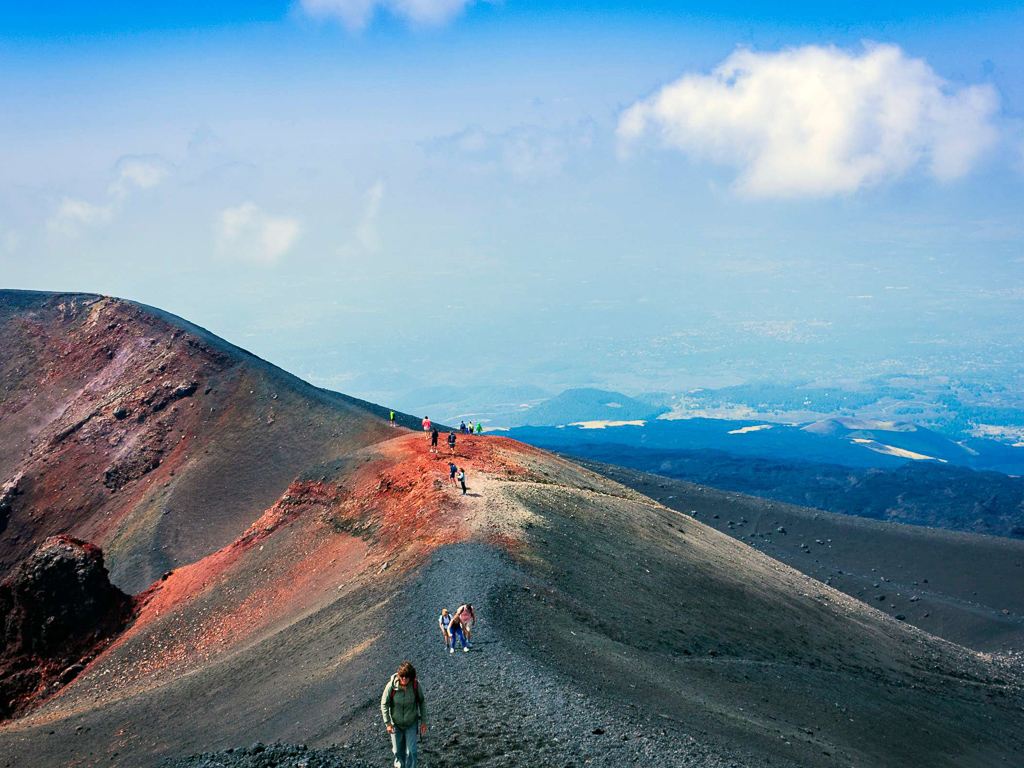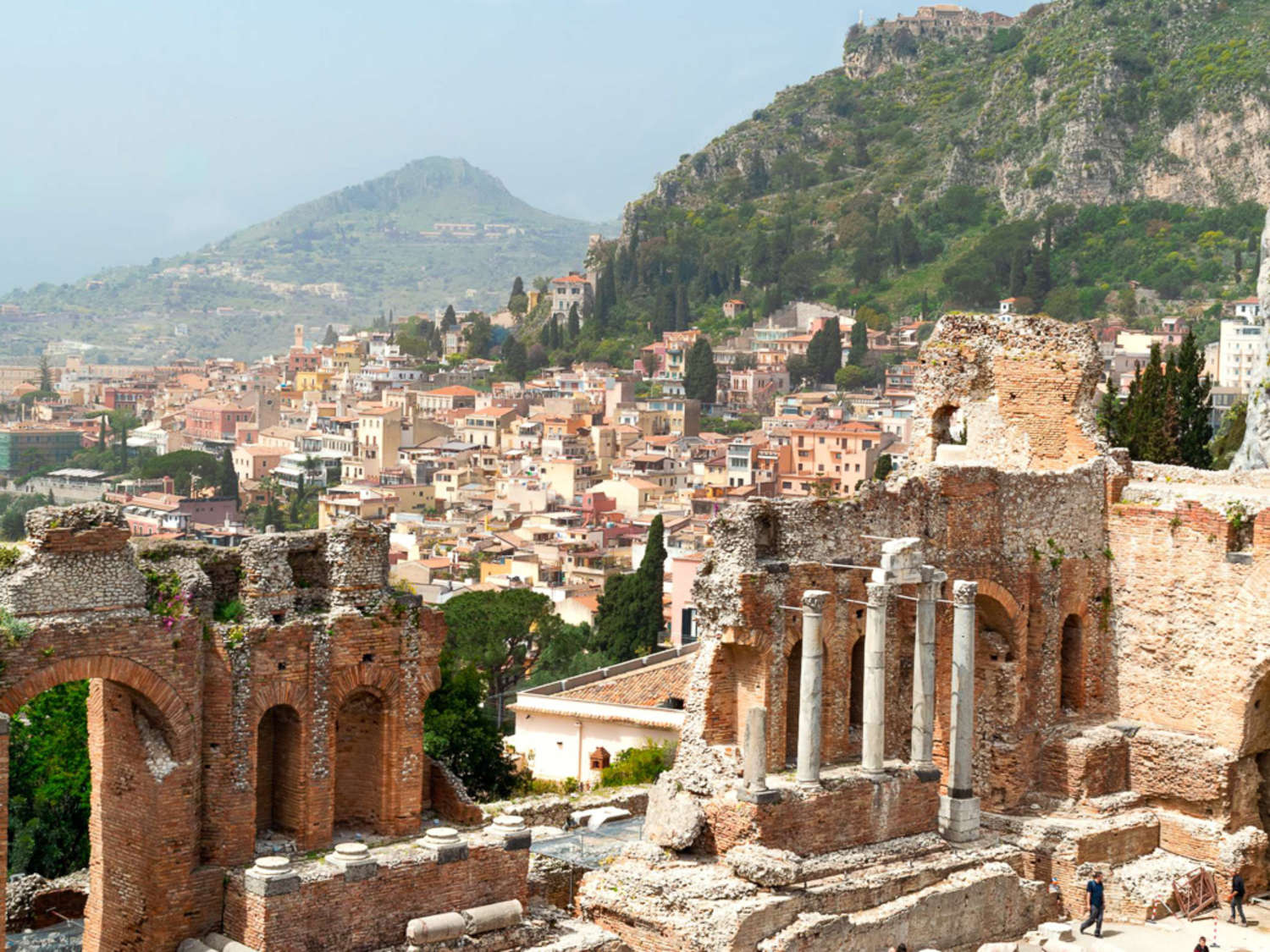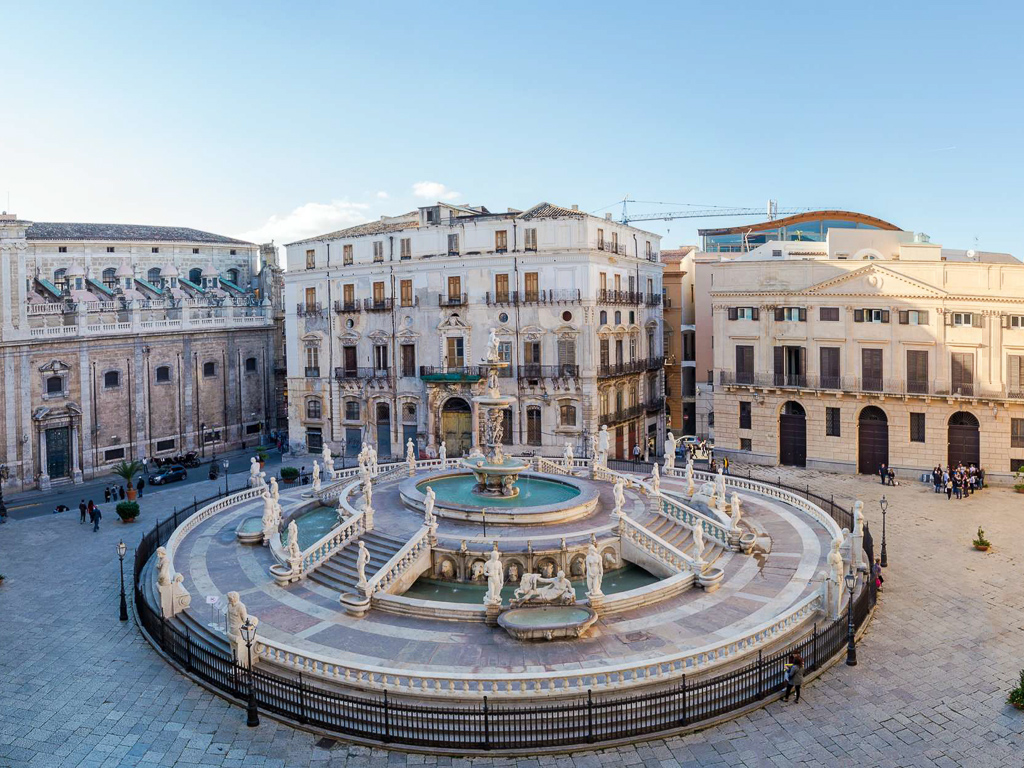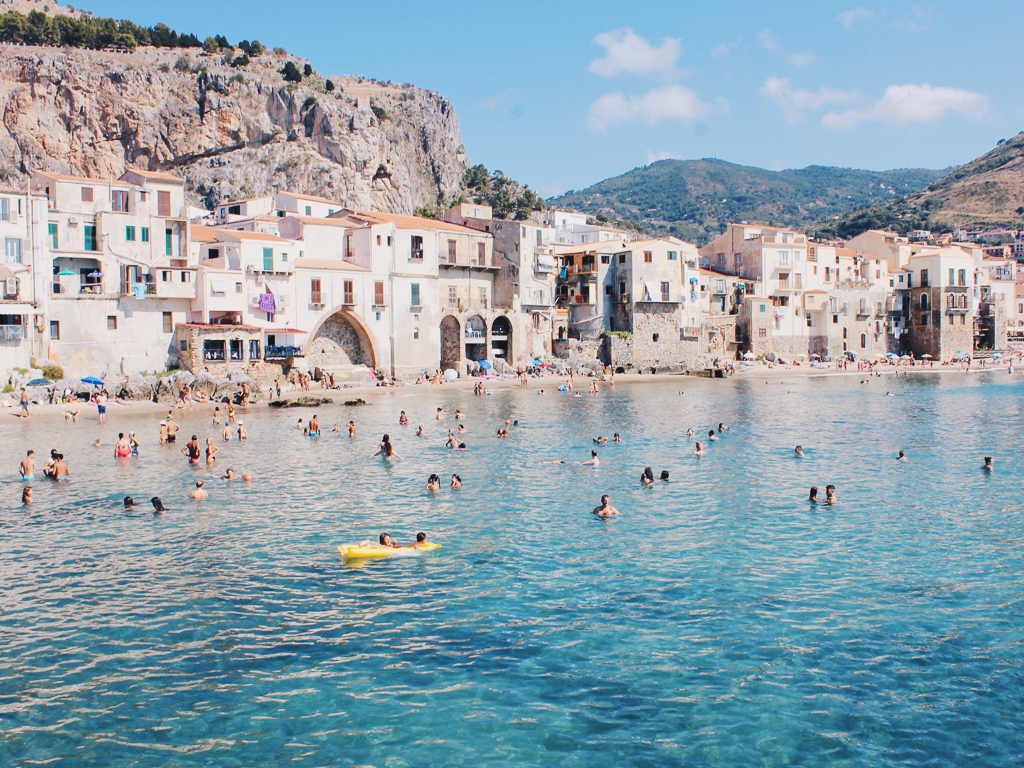We often find ourselves envious of Odysseus. Sure, the hero spent 20 years away from his Ithaca home, his wife, and his son, but his travels read like the journey of our dreams: his odyssey included stops (albeit often harrowing) in modern-day Palma, Tunisia, Sardegna, Greece, and Turkey.
There's one distinct thing we don't envy Odysseus for, however: his experience on the island of Sicily. According to the grand tale, the beleaguered king lands in Sicily and is nearly immediately trapped in the cave of the cyclops (and son of Poseidon) Polyphemus. After a battle of wits and spears, Odysseus and his men escape Polyphemus only by clinging to the bellies of Polyphemus' sheep as they trot out to pasture.
In Homer's version, of course, it's Odysseus' blinding and subsequent mockery of Polyphemus that dooms him to ten years of seafaring. In our version, it's Odysseus' departure of the island without having seen one temple nor tasted nary a cannolo that's the real tragedy. Lest you make the same mistake, here's our Context recommendation for six days in Sicily with plenty of cannoli and templi.
A Sicilian Sortie for Curious Travelers
Palermo (2 Nights)
Day 1: Palermo & Monreale
Duration: 8 hours
We'll kick off our Sicilian sortie with a survey of the stunning cathedrals, architecture, art, and markets in the historic Sicilian towns of Palermo and Monreale. With a local historian, we'll explore how the two cities emerged as hubs during the Norman and Arab eras in Sicily, visiting the market of Capo and the Norman church of La Martorana. We'll wrap up day one with a jaunt to the UNESCO world heritage-listed Cathedral of Monreale.
Day 2: Sicilian Flavors Abound
Duration: 4 hours
After the cultural exploration of our first day, we’ll spend day two focused on the island's diverse (and delicious) culinary history. In the company of a local chef or culinary historian, we'll taste the unique flavors of Palermo's historic markets and winding alleys with visits to Capo and Ballaro neighborhoods. We'll walk off our snacks by tucking into a few of the city's most precious churches, including the Palermo Cathedral and the Church of the Immacolata Concezione. To really whet the appetite, take a look at our Best Food in Sicily blog post.
Agrigento (1 Day)
Day 3: Valley of the Temples
Duration: 4 hours
The Greek poet Pindar described Akragas (Greek for Agrigento) as “the most beautiful city on earth” for its spectacular location and monumental buildings. With an archaeologist, we'll explore the Valley of the Temples to familiarize ourselves with the ancient urban layout of Agrigento; its main streets, fortifications and sacred buildings dedicated to the cult of the Olympian gods—perhaps most importantly, the Temple of Concord and the Temple of Olympian Zeus. We'll then make our way to the Griffo Archaeological Museum, taking in one of the most ancient telamon in the Greek world.
From Mt. Etna to Taormina (2 Days)
Day 4: Full-Day at Mount Etna and a Local Winery
Duration: 8 hours
We'll marvel in the wonder of Mount Etna, Europe's largest active volcano, by picking along extinct craters to learn about the history and formation of the great mountain. With an agronomist or nature specialist, we'll then continue to a local winery to taste some of the distinct wines whose structure comes from the environment's volcanic soil.
Day 5: Delight in Taormina
Duration: 3 hours
We'll recover from a packed yesterday with a leisurely half-day introduction to Taormina, a longtime destination for vacationers, artists, musicians, and writers. We'll take in the bewitching panorama between the Ionian Sea and Mount Etna, with stops at the Greek-Roman Theater, the Palazzo Corvaja, and the Porta Messina.
Farewell from Siracusa (1 Day)
Day 6: Introduction to Ortigia and the Neapolis
Duration: 4 hours
Finally, we'll wrap our Sicilian sortie with a stop in SirWe'sa and discover the Archaeological Park of the Neapolis, one of the most significant Greek and Roman archaeological sites in the Mediterranean. The ruins are a testament to the crucial role this city played in ancient antiquity, as the imposing remains of the Greek theatre demonstrate. After, we will head off to nearby Ortigia for a pleasant stroll through its quaint streets and alleyways. We'll explore around 2500 years of history and finish the tour by discussing Ortigia’s splendid architectural history and the remains of Greek, Roman, Byzantine, Gothic-Catalan, Norman and Renaissance styles that decorate this island.
Want to learn with a true expert? Get a comprehensive view with one of Context's tours in Sicily.
















